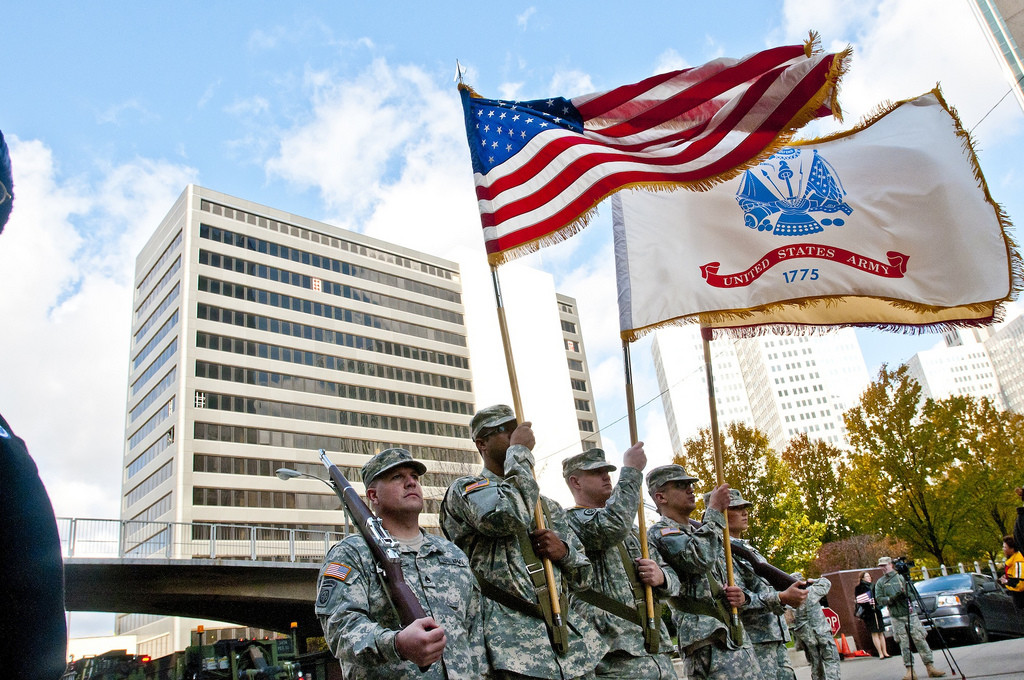Learning from the Air Force: Why The Army Needs a Congressional Commission

Over recent months, tensions between the active U.S. Army and the U.S. Army National Guard have escalated dramatically. Instead of working as a team to manage the deep cuts to Army force structure and end strength, the two sides have withdrawn to their corners, donned their boxing gloves, and sparred bloodily about topics ranging from restructuring aviation assets to the degree of interchangeability between active and reserve forces. These battles are so contentious, and mutual distrust so high, that Congress is debating the creation of an independent commission to examine the future roles of active and reserve components of the Army. Although Washington commissions rarely solve tough problems, in this case a commission is essential to establish ground truth and serve as a catalyst to help restore trust among the Army’s components.
The Army is not unique in battling with the National Guard and reserve components. A few years ago, the U.S. Air Force (USAF) similarly clashed with its reserve components. Partly as result, Congress established the National Commission on the Structure of the Air Force. The commission analyzed the pros and cons of the most divisive issues driving this internecine air war and ultimately provided useful recommendations. Its lasting impact, though, may have been from its indirect role as a catalyst. The new Chief of Staff of the Air Force, General Mark Welsh, took office while Congress was considering legislation to create the commission. In this setting, Welsh came into office determined to better integrate all components of the Air Force and mend their rifts.
Four months after taking office, General Welsh (together with Secretary of the Air Force Michael Donley) established an organization devoted to ensuring the voices of all components would reach the ears of senior Air Force leaders. The Total Force Task Force included three two-star USAF generals, one each representing the active-duty Air Force, the Air Force Reserve, and the Air National Guard. Its stated mission included recommending ways to improve balance and integration among these communities. But it also had a more implicit, yet far more important purpose: to convey to all members of the force that the opinions and outlooks of all USAF components would be heard and respected. Under Welsh’s leadership, the Air Force slowly rebuilt its three warring components into a single family – one with different ideas, cultures, and outlooks, but ultimately aimed at the same objective. The Air Force commission helped animate and speed this transformation.
Welsh continues to use a version of his Total Force Task Force today to consult and coordinate with a standing panel of three generals (now at the one-star level) from each of the communities. Leveraging the work of the Air Force commission, Welsh has continued his personal commitment to teamwork and comity between USAF components. He has largely restored trust and loyalty among the Air Force’s three communities to an extent that seemed unimaginable during their public feuds a few years ago. After hearing Welsh speak to the annual conference of the National Guard Association of the United States this past August, one participant noted that all the Adjutants General – the 54 joint leaders of the Army and Air National Guard in each of the U.S. states and territories – “would do anything for Mark Welsh.”
All of the services are facing contentious debates between their active and reserve components. As budgets decline, all actors are scrambling for dollars to preserve their equities. In such an intensely competitive environment, objectivity is often the first casualty. A Congressional commission could help the Army and its three warring components untangle the emotions, clearly outline the issues, and provide a measure of objective analysis and common metrics by which to analyze the challenges at hand.
Sadly, it seems extremely unlikely that any of these outcomes will be achieved without external intervention. The time is right for Congress to establish an external commission to examine these seemingly intractable issues. Such a commission can provide the Army a fresh look at options, unencumbered by service parochialism. It can give top cover to the Army’s leadership, enabling all components to collaborate on finding solutions. Moreover, with the new Army Chief of Staff set to take over the service by September 2015, the initial work by such a commission can help lay the groundwork for the next Army Chief to restore trust and build a more effective relationship between the active and reserve components.
The close relationship among the Army’s active, Guard and reserve components that had characterized the last thirteen years of war is now deeply frayed. Budget pressures and a shrinking force have deeply eroded years of hard-won mutual trust and confidence between them. A Congressional commission may be the only way to provide unbiased analysis and recommendations to the Army’s leadership that will start to heal the painful rifts between the components that are so evident today. Rebuilding that trust may be the next chief’s most important contribution to maximizing the capabilities and effectiveness of the nation’s land forces.
LTG David W. Barno, USA (Ret.) and Dr. Nora Bensahel are Senior Fellows and the Co-Directors of the Responsible Defense Program at the Center for a New American Security.
Photo credit: 316th ESC

